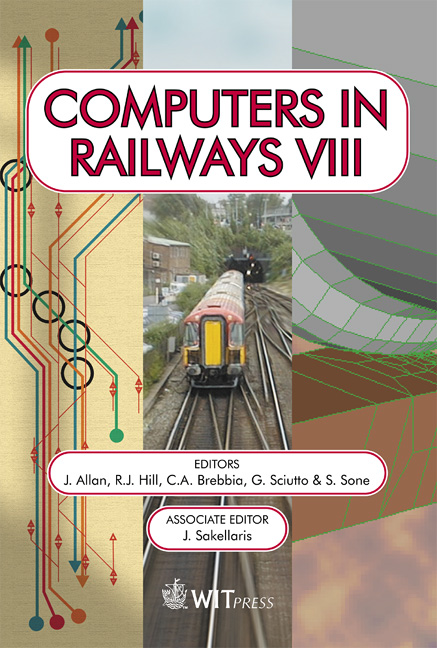Innovative Solutions For Active Railway Pantograph
Price
Free (open access)
Transaction
Volume
61
Pages
10
Published
2002
Size
512 kb
Paper DOI
10.2495/CR020231
Copyright
WIT Press
Author(s)
B Allotta, L Pugi, A Rindi, M Papi & C Goracci
Abstract
Current collection’s quality is a critical factor for the development of high-speed railways. The dynamic behaviour of the pantograph-catenary system at high speed negatively affects quality and stability of the contact between the sliding bows and the wires. Negative consequences of an insufficient current collection’s collection are well known among researchers: insufficient current pick up, wear and over-heating of sliding surfaces, high EMI, low electrical and mechanical reliability of the system. Several solutions were proposed in the past years to solve this problem. In this paper the authors propose an innovative layout for an actively controlled railway pantograph. This kind of active pantograph should be used to control some variable, such as contact force between sliding surfaces, by using an array of actuators able to correct the dynamic behaviour of the pantograph-catenary system. The design of an innovative actively controlled pantograph has to respond to low-cost, reliability and harsh environment specifications. Moreover, in this paper the authors propose a concept solution, the \“overturning pantograph”, based on both main frame and sliding bow suspension’s innovative schemes. Tri-dimensional models of the pantograph have been developed by using various parametric CAD Systems. CAD geometry was exported in software tools for structural and multi-body-dynamical analysis using the Parasolid standard format. Parametric features of CAD software and prediction capabilities of multi-body analysis tools have been used to iteratively find a sub-optimal solution. Simulation results of the new solution and experimental data of a another type of controlled pantograph, previously developed, are compared and evaluated. The comparison shows feasibility and potentiality of the proposed solution.
Keywords





